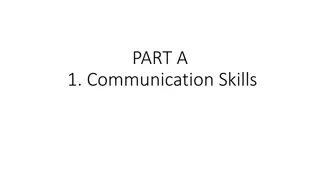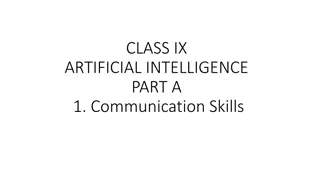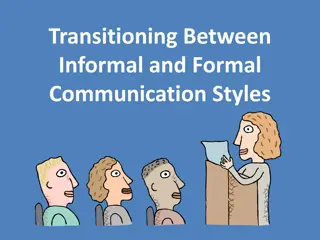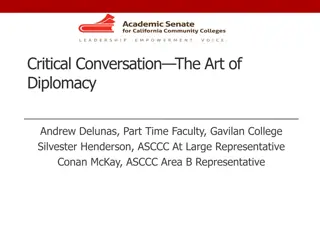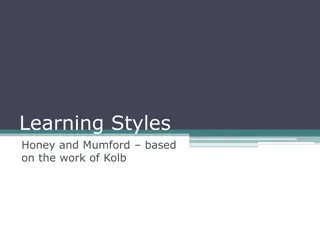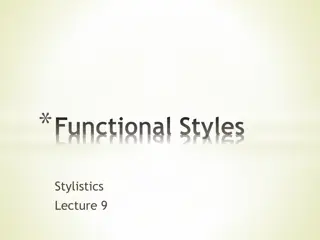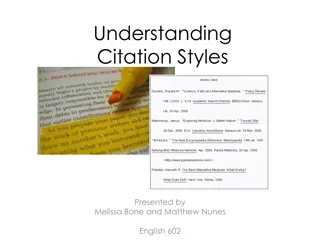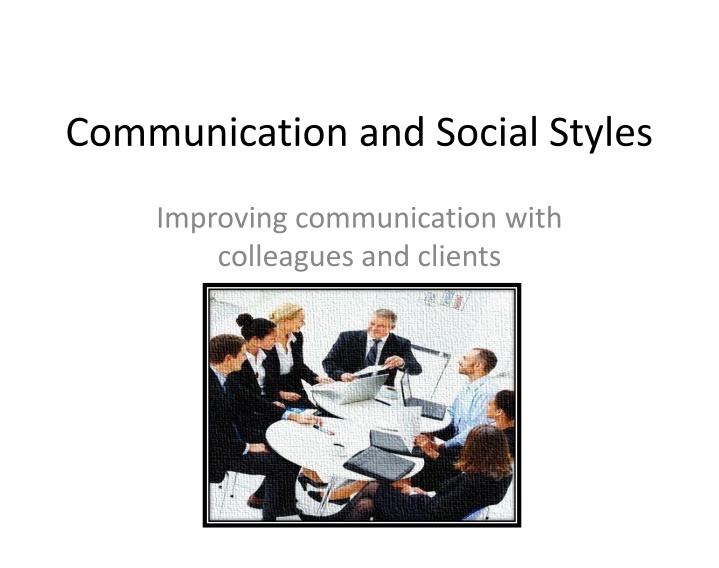
Enhancing Communication and Social Styles for Better Relationships
Improve communication with colleagues and clients by understanding different social styles, active listening techniques, and the importance of non-verbal cues. Discover how to identify and adapt to various communication styles to establish effective connections and avoid misunderstandings.
Download Presentation

Please find below an Image/Link to download the presentation.
The content on the website is provided AS IS for your information and personal use only. It may not be sold, licensed, or shared on other websites without obtaining consent from the author. If you encounter any issues during the download, it is possible that the publisher has removed the file from their server.
You are allowed to download the files provided on this website for personal or commercial use, subject to the condition that they are used lawfully. All files are the property of their respective owners.
The content on the website is provided AS IS for your information and personal use only. It may not be sold, licensed, or shared on other websites without obtaining consent from the author.
E N D


